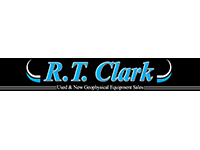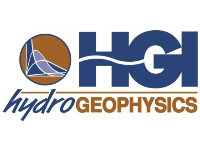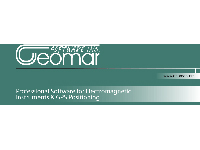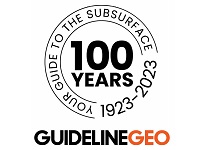- Home
- About Us
- GAINS
- News/TAG Webinars
- Membership
- Annual Meeting/SAGEEP
- SAGEEP 2026
- SAGEEP 2025
- SAGEEP 2025-Munitions Response Meeting Abstracts/Sessions
- SAGEEP 2025-MRM Exhibiting/Sponsorship Opportunities
- SAGEEP 2025-MRM Accommodations
- SAGEEP 2025-MRM Registration Information
- SAGEEP 2025-MRM Program
- SAGEEP 2025-Munitions Response Meeting Short Courses
- SAGEEP 2025/MRM Luncheons/Conference Events/Activities
- SAGEEP 2024
- SAGEEP 2023
- SAGEEP 2022
- SAGEEP 2021
- SAGEEP 2020 Exhibiting/Sponsorship
- SAGEEP-2019
- SAGEEP 2019 Exhibiting/Sponsorship
- SAGEEP 2018
- SAGEEP 2017
- SAGEEP 2016
- SAGEEP 2015
- Proceedings SAGEEP 2024
- Proceedings SAGEEP 2023
- Proceedings SAGEEP 2022
- Proceedings SAGEEP 2018
- Proceedings SAGEEP 2025
- Publications & Merchandise
Just-Accepted Journal ArticlesJust-Accepted Articles are peer-reviewed, accepted manuscripts that have been assigned Digital Object Identifiers (DOIs) and undergo the normal publication process (copy editing, page composition, proofing by author, and finalization). A Just-Accepted article listing includes an abstract and the DOI (scroll). The article is removed when the final version of the manuscript is ready and assigned to a Journal of Environmental & Engineering Geophysics (JEEG) issue, becoming the official version of the article. The Just Accepted article has the same DOI that appears on the official version of the article; therefore, citations made to an article during the Just-Accepted stage will continue to link to the article's official version. EEGS Members can access the full, preliminary article via this "member-only" link: Just-Accepted Articles with full article PDF Application of Geoelectrical Methods to Identify the Subsurface Layering Structure of Construction and Demolition Waste Depot DOI: https://doi.org/10.32389/JEEG22-025 Abstract: In large cities with a growing population, the expansion of construction and demolition (C&D) waste of buildings can lead to the annual production of millions of tons of waste. Any solution for inexpensive, rapid, and accurate identification of these depots' layering structure and composition can greatly benefit urban management. Geoelectric methods can serve as a simple, cost-effective, and sufficiently accurate means of identifying these materials. In this study, the layering structure of C&D waste buried in line 4 of the Hesar landfill in Karaj City, Iran, was determined using a geoelectric method involving the assessment of electrical resistivity variations in both vertical and horizontal directions. Wenner-Schlumberger array was utilized for the measurements, and 2,870 electrical resistivity points were collected. RES2D-INV software was utilized to interpret the data and plot geological sections. In addition, a series of laboratory tests, including Sieve analysis and water content, were performed on samples collected by continuous core boring to better understand the waste composition. According to the study results, compared to the field data, it was concluded that the ERT could accurately predict the changes in various soil layers, aggregate sizes, and water content. In addition, data from boreholes revealed that most of the materials buried in this depot are concrete. The results of this study can assist urban management in recycling C&D waste. Recycling C&D waste recovers some economic value from C&D waste, clearing out C&D waste depots and eliminating the environmental desirability issues that they can cause in surrounding areas. Distortions of Metallic Objects in EM34 Apparent Conductivity Readings Authors: Abstract: Metallic structures are a common noise source in Slingram electromagnetic surveys because they interact with the primary magnetic field generated by the transmitter coil and create a secondary magnetic field that distorts the apparent conductivity readings from a layered or homogeneous subsurface. The main challenge is understanding how their influence varies depending on the loop configuration and the distance at which the surface structure no longer distorts the apparent conductivity readings. We propose a methodology that integrates experimental techniques and numerical modeling to elucidate the distortions induced by a fence-like structure placed at varying distances from the coils of a low-induction conductivity meter. Additionally, we aim to evaluate the model responses using numerical simulations with electromagnetic systems operating at higher frequency ranges. To quantify the distortions in apparent conductivity, we conducted field measurements by keeping the electromagnetic coils in a fixed position while changing the placement of the conductive structure. The readings obtained before installing the conductive structure were used as the background reference response to accurately determine the distortions. The same experimental procedure was tested in terrains with different resistivities to evaluate the changes caused by the same structure in different backgrounds. Our results show that this approach allowed us to infer that the deviations in apparent conductivity caused by the presence of the fence are more noticeable where the background resistivity is higher. However, these deviations were observed only for short distances of about 1/5 to 1/2 of the coil separation for the evaluated targets. The integration between the experimental survey and the numerical modeling suggests that distortion increases when the instrument is operated at induction numbers higher than ∼0.2. For all tested conductivity models and frequency ranges, minor distortions were observed with the vertical coplanar coil configuration compared to the horizontal coplanar configuration for the transmitter-receiver pair. Negligible distortions were observed for fences with unconnected wires, suggesting minor interference from loose metallic objects on the ground surface that do not form closed loops, favoring EM induction. Electrical Resistivity Inversion Based on Symmetric Polynomial Constraint Authors: DOI: 10.32389/JEEG23-028 ABSTRACT: As we seek to make geophysical models more consistent with geological models, more and more a priori information is incorporated into geophysical inverse problems. How we make the most use of a priori information is still a key issue in geophysical inversion, particularly for effectively representing such information in inversion problems. To address this problem, we propose a symmetric polynomial constrained inversion algorithm that can represent multiple known physical properties for the lithology. The electrical resistivity synthetic model tests show that the inversion results constrained with symmetric polynomials can make the model resistivity be in line with a priori information and obtain more realistic sharp boundaries. Finally, we give a practical verification of our inversion algorithm with field data. Keywords: Electrical resistivity; Inversion; Symmetric polynomial; rock physical properties Development of An ANN-based Technique for Inversion of Seismic Refraction Travel Times Authors: Characterization of a small abandoned municipal solid waste scattered landfill combining remote sensing and near-surface geophysical investigations Authors: DOI: 10.32389/JEEG23-002 ABSTRACT: This study reports the combination of remote sensing and ground geophysical techniques to locate an abandoned and hidden municipal solid waste landfill located in a fluvial plain in the French Western Alps. Following earthworks and further floods that eroded into the river bank, wastes made of a mixture of plastic, metal and soil/earth, were uncovered and some of them flowed into the river. The existence of an abandoned landfill, several decades-old, was known, but the knowledge of its exact location was forgotten. Historic aerial photographs back to 1948 allowed delineation in space and time of the location of a platform that was used for landfill operations between around 1973 and 1983. A LiDAR DEM acquired in 2012 allowed was used to locate topographic depressions 0.1 to 0.4 m in depth, notably inside the platform. These depressions are interpreted as resulting from differential compaction originating from the presence of compressible wastes. Geophysical mapping techniques (magnetic and electromagnetic) confirmed the presence of anomalies inside the identified platform. Geophysical imaging techniques (ground-penetrating radar, electrical resistivity tomography) provided a quantitative evaluation of the width and depth of the individual pits. The combination of the different techniques allowed for estimating the first-order volume of waste. The methodology adopted in this work is applicable to detect landfills exhibiting differential compaction and physical contrasts. Keywords: Municipal solid wastes; aerial photographs; LiDAR; near-surface geophysical methods Seismic swell effect correction using GVF-based guide-line Authors: DOI: 10.32389/JEEG23-009 ABSTRACT: Swells in marine seismic data disrupt the continuity of the reflection events and makes interpretation difficult. The swell effect removal process consists of sea-bottom detection and correction, which removes the swell effect by shifting the detected sea-bottom signal to the known or estimated seafloor location. The quality of correction depends on the accuracy of the sea-bottom detection. Since general sea-bottom signal detection techniques have been applied directly after pre-processing, a number of mispick scenarios exist due to the characteristics of the data, and additional processes are needed. In this study, we propose a process for accurate detection of sea-bottom reflection signals using the guide-line. The errors are caused by mistaking other reflection events as sea-bottom signals. The guide-line can improve the accuracy of detection by providing rough event times of sea-bottom reflection. The guide-line was extracted from the gradient vector flow (GVF) technique, which is a segmentation method in the image processing field. In the GVF data, the seafloor signals are smoothed and the energy is focused on the sea-bottom. The threshold method was used to detect sea-bottom signals in the range after the guide-line. To attenuate the swell effect, the detected signals were shifted to estimated seafloor locations. The GVF-based guide-line (GVF-GL) method was applied in field data acquired by the airgun and chirp sources with different frequencies. The sea-bottom location was successfully detected and the continuity of the sea bottom and subsurface signals on the section was improved. Keywords: swell effect correction, sea-bottom detection, gradient vector flow (GVF), guide-line, threshold Detect multiple-set fractures by crosshole seismic tomography for using in environmental and engineering geophysics Authors: DOI: 10.32389/JEEG22-037 ABSTRACT: Crosshole seismic tomography (CST) could be used to reconstruct the velocity section of media between two holes. One of the commonly used attributes of fractures reflected in seismic waves is the anisotropy of velocity. Therefore, in this study, the multiple symmetry axes of anisotropic media are utilized to simulate the multiple-set fractures in strata. The anisotropic algebraic reconstruction technique (AART) and anisotropic simultaneous iterative reconstruction technique (ASIRT), which are extensions of isotropic ART and SIRT, are used to detect the medium with multiple symmetry axes and strong anisotropy. Full coverage of ray paths in azimuth is needed for these techniques. The performances of these techniques are tested by the numerical and physical modeling. Testing results show that the multiple-set fractures can be successfully detected by the proposed AART and ASIRT methods when the number of observed data exceeds the number of estimated parameters. However, in complexly anisotropic and heterogeneous media, if the number of estimated parameters is equal to or greater than the number of observed data, the estimation error will significantly increase for using these techniques. Keywords: anisotropy; multiple-set fractures; crosshole seismic tomography Influence of Radiative Components and Meteorological Conditions on Simulation of Slope-Specific Heat Balance
|





















